Nightjar, your system is obviously not a 'failure', maybe just not as efficient as it could be, so as you point out, why spend big bucks on it until it actually needs renewing :Y:
You are using an out of date browser. It may not display this or other websites correctly.
You should upgrade or use an alternative browser.
You should upgrade or use an alternative browser.
More on Bush Power
- Thread starter condor22
- Start date

Help Support Prospecting Australia:
This site may earn a commission from merchant affiliate
links, including eBay, Amazon, and others.
condor22
Mike
Nightjar
"Sorry RR, can you get back to your original post"
If you are referring to his fridge testing, that's a different thread, lol.

"Sorry RR, can you get back to your original post"
If you are referring to his fridge testing, that's a different thread, lol.
- Joined
- Sep 4, 2014
- Messages
- 8,935
- Reaction score
- 6,776
condor22 said:Nightjar
"Sorry RR, can you get back to your original post"
If you are referring to his fridge testing, that's a different thread, lol.

Well I haven't bothered posting the results, but some of the minor details apply to this thread because you happened to mention your findings and My main concerns are how on earth am I going to get that used power back in the batteries without blowing the crap out of my batteries within a given time, 115A /@ 50% is 57.5 Amps Used, this little Snomaster just chewed over 47Ah in 24 hours, Being a 115Ah Battery I have found that it charges better on the Low setting on my Charger because it is then putting out 9 or 10 Amp, On the second setting it puts out around 16-20 Amps which is way too high because it reaches well over 14V before the battery has had chance to Absorb any Current from the Charger, And on the Highest Setting it puts out 35Amps and around 310/320 on Boost/Start, YES it will do it fast but at what Cost ??
This is why Lead Crystal is the safer option because you can hit them with very High Amperage and they will suck up every bit of it, where Lead Acid wastes so much time and Available power coming from the Charging source. and To be able to keep up with the demands of some of these fridges I just don't see the Answer being in Lead Acid Batteries.
RR, I believe the problem you are experiencing with your battery on a high charge current is that it may be just taking a 'surface charge', & therefore not really fully charging. This is why smart chargers with a 3, 5 or 7 stage charge profile do a much better job, especially on deep cycle batteries.
condor22 said:Nightjar
"Sorry RR, can you get back to your original post"
If you are referring to his fridge testing, that's a different thread, lol.

Comes with old age mate :lol:
Found this link referring to Lead Crystal, sure know what battery I'll buy next. 18 year life!
https://trailercamperaustralia.com.au/electrical/12v-batteries/lead-crystal-batteries.html
- Joined
- Sep 4, 2014
- Messages
- 8,935
- Reaction score
- 6,776
Ded Driver said:RR, I believe the problem you are experiencing with your battery on a high charge current is that it may be just taking a 'surface charge', & therefore not really fully charging. This is why smart chargers with a 3, 5 or 7 stage charge profile do a much better job, especially on deep cycle batteries.
Yeah I got 3 NOCO Smart chargers and they take forever to charge a normal Deep Cycle Lead Acid Battery where as my Big Normal Charger on the Lowest setting charges them a lot better and faster.
I Only ever hit it with the 16A setting once, and yes it was faster but the SOC went down a lot quicker when in use, so now I always us the Lowest setting which is around 9 Amps and it takes a few hours but I let it float for a couple of hours while keeping an eye on the Voltage and it seems to last a lot longer per charge,
It Ran my ARB 47L for 6 and a half days before I shut it down keeping it above the 50% mark. After being allowed to rest for 4 to 6 hours these batteries still read 13.36 to 13.45v which gives me heaps of power,
The only way I can see round this using Lead Acid Batteries is to use 2 banks of 2 and while One is charging I can use the other and switch over to the other bank when needed that way time is not a problem and nor is charging them.
This project has been dragging on but getting there, conversion of a Razor Scooter into a Wind Generator.
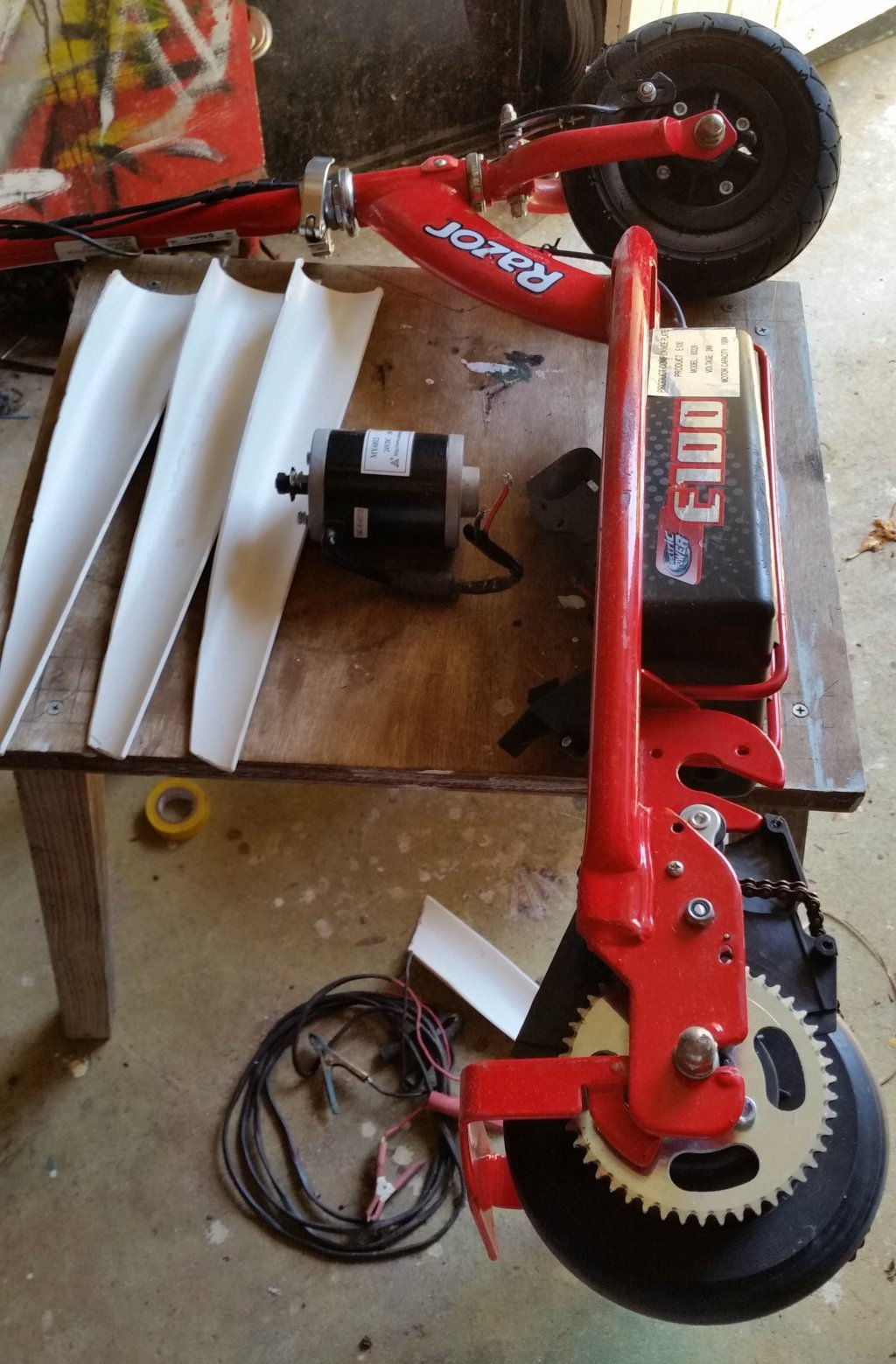

- Joined
- Sep 4, 2014
- Messages
- 8,935
- Reaction score
- 6,776
Funny that NJ, I was looking at one of them electric bikes and thinking the same thing, The thing had a range of about 50ks.
Stripping it down to begin project.
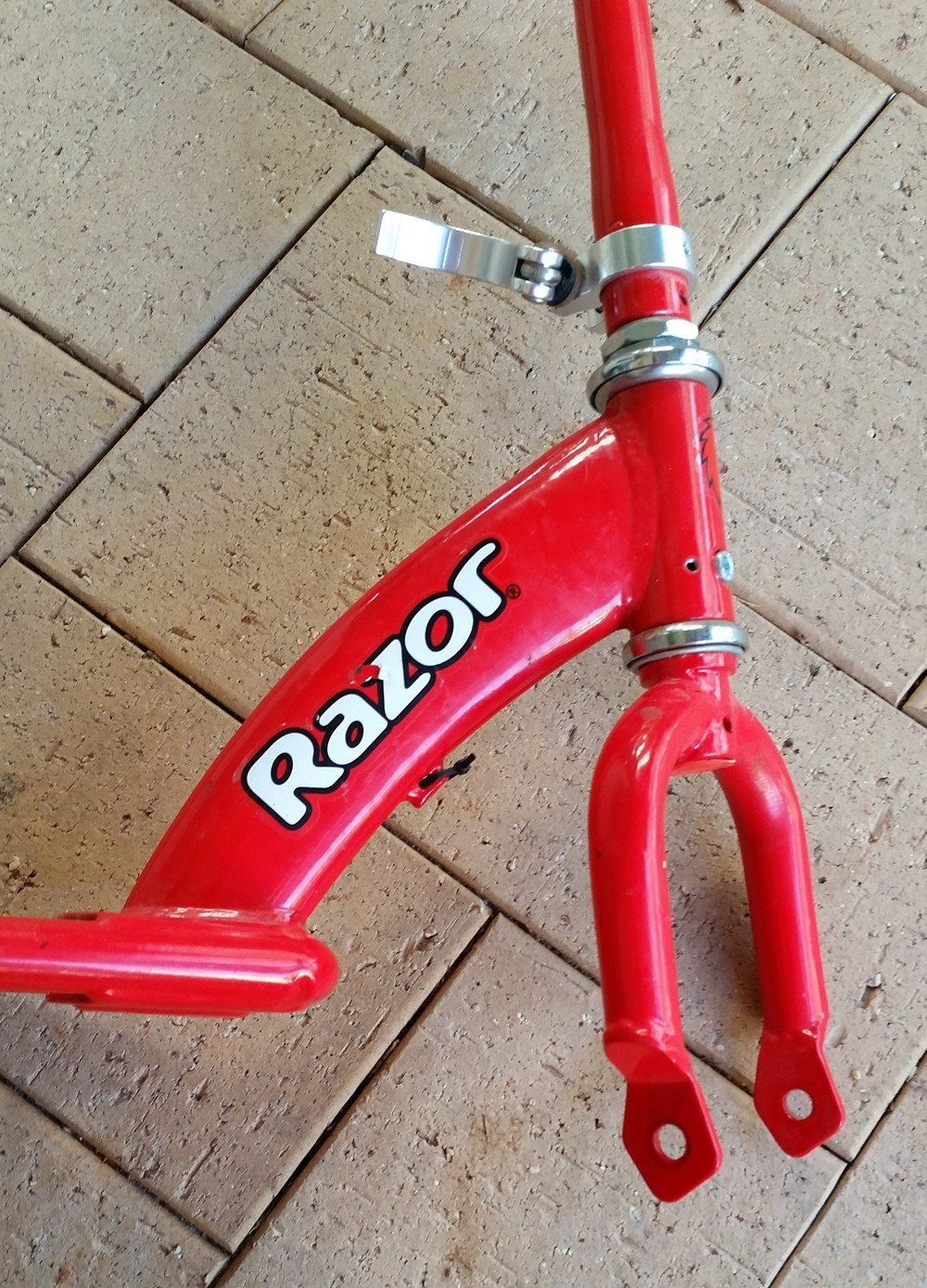
Blades made up using 100mm PVC.
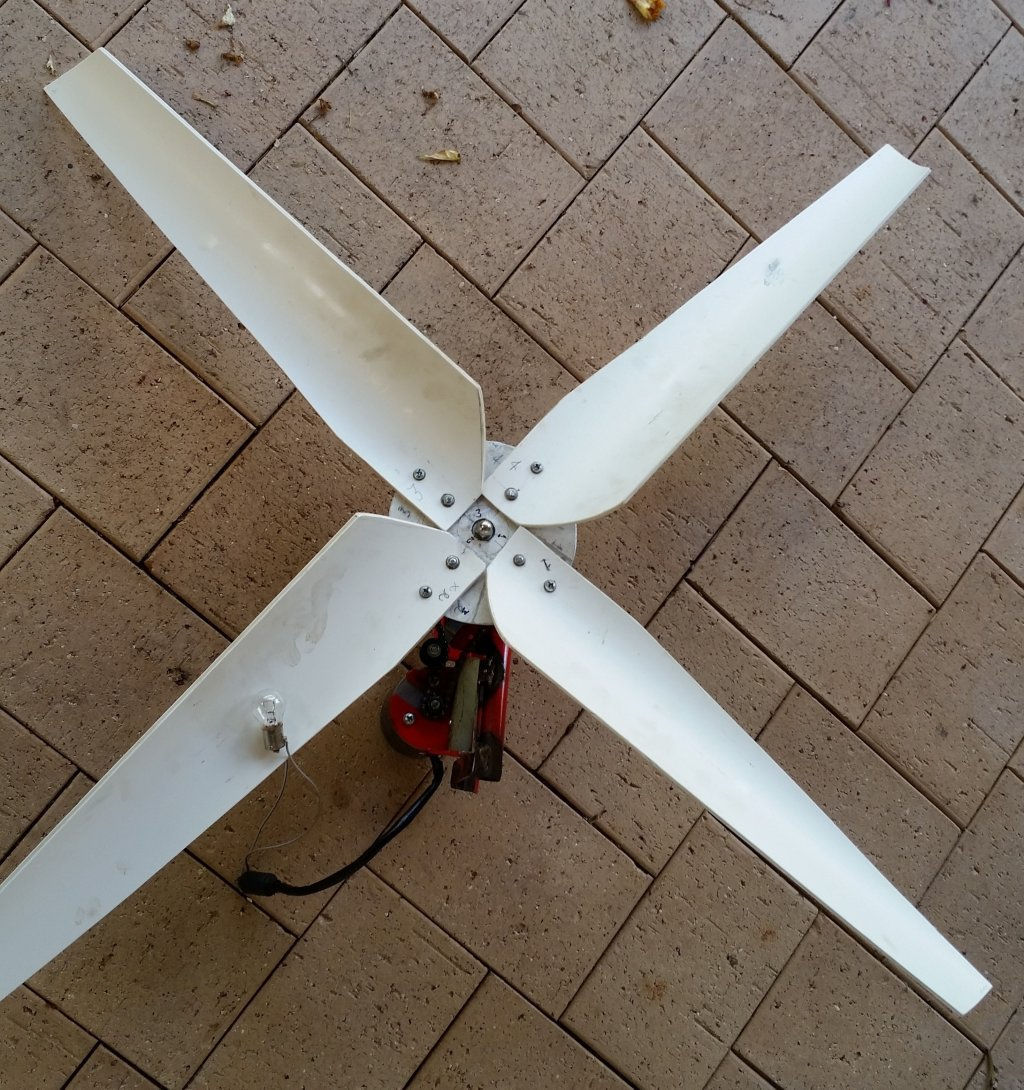

Blades made up using 100mm PVC.

- Joined
- Feb 16, 2019
- Messages
- 415
- Reaction score
- 477
I have made one very similar NJ, but i used an old jarvis walker water snake electric outboard, all waterproof and sealed and on a stainless shaft as well, turned upside down and just had to make blades same style as yours but i only use 3 blades, hook up a pwm regulater and good to go easy project. Will try dig up a pic some where, cheers Noel.  erfect:
erfect:
Yes Noel, With a bit of imagination and eye your local kerbside recycle many very cheap projects evolve in the shed.
Slip ring assembly to allow for the wind changes.
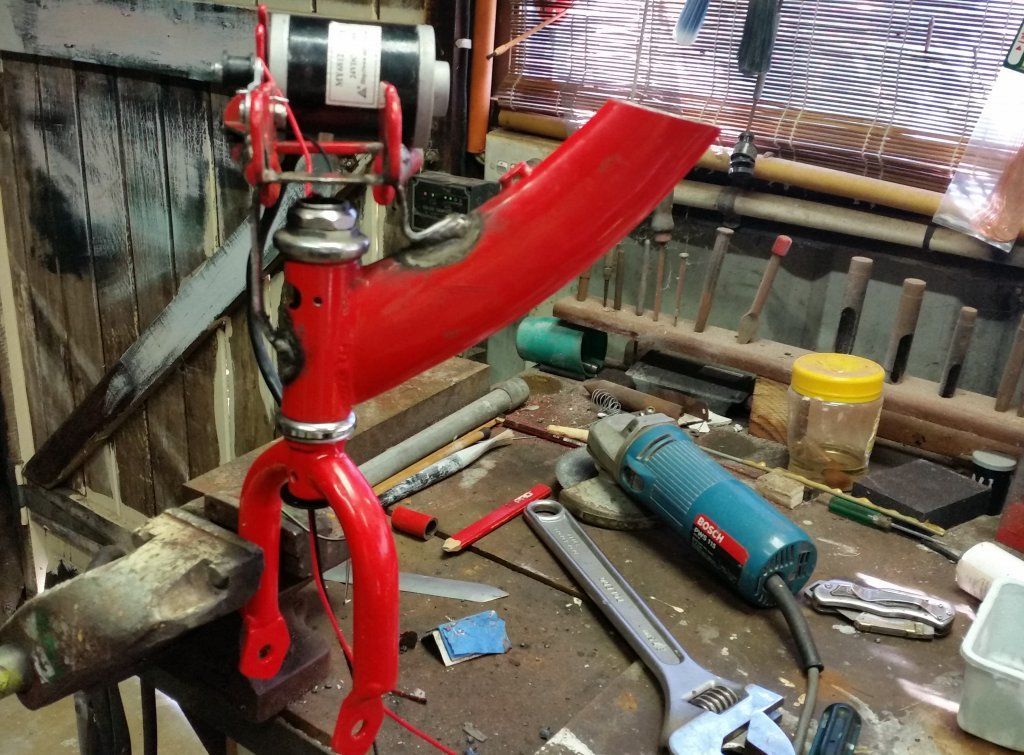
Picked this slip ring on eBay. Fitted perfectly in Razor steering stem.
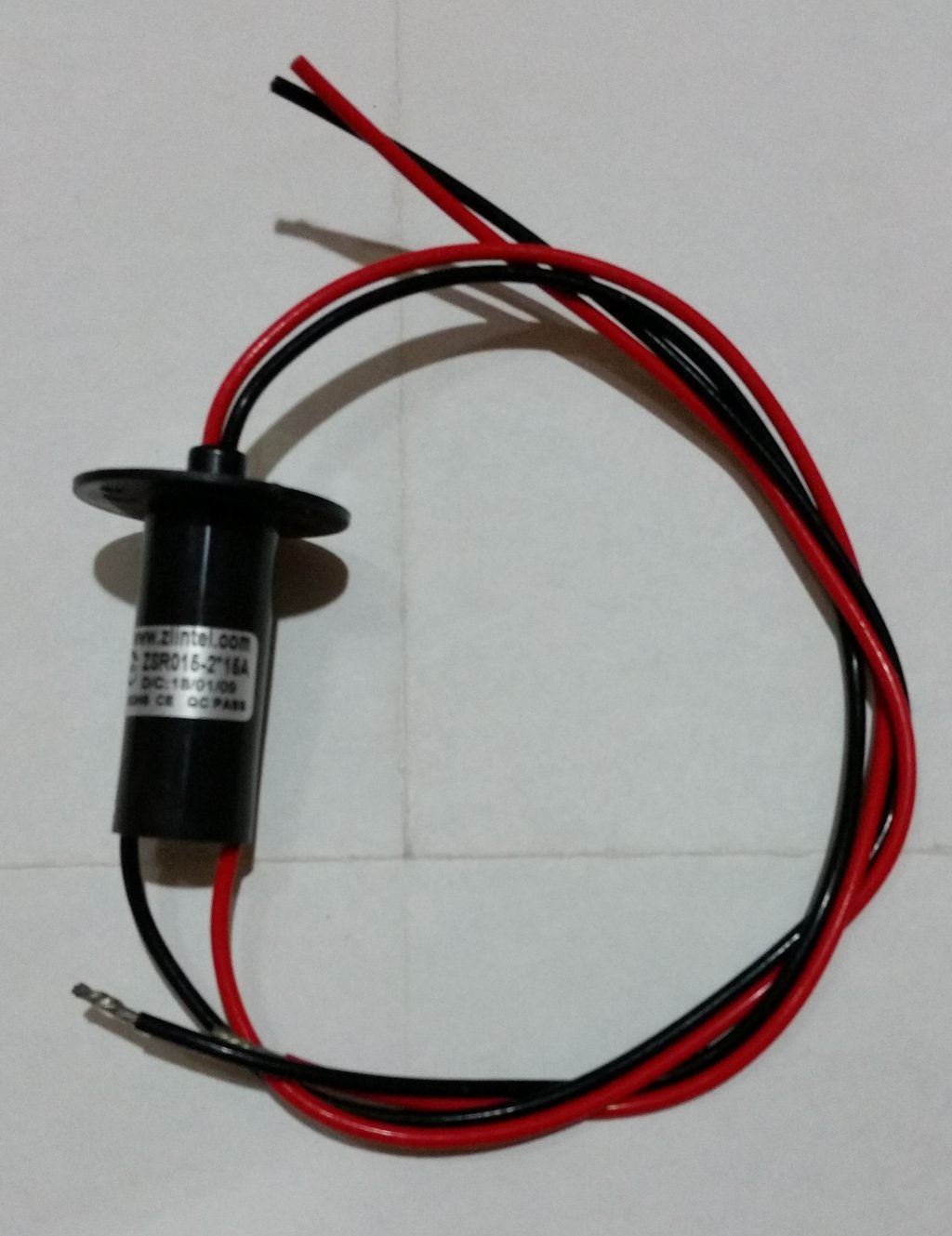
Slip ring assembly to allow for the wind changes.

Picked this slip ring on eBay. Fitted perfectly in Razor steering stem.

Develops 15V held up into a moderate wind. Post #69 shows a 12V headlight bulb that illuminated during wind test.
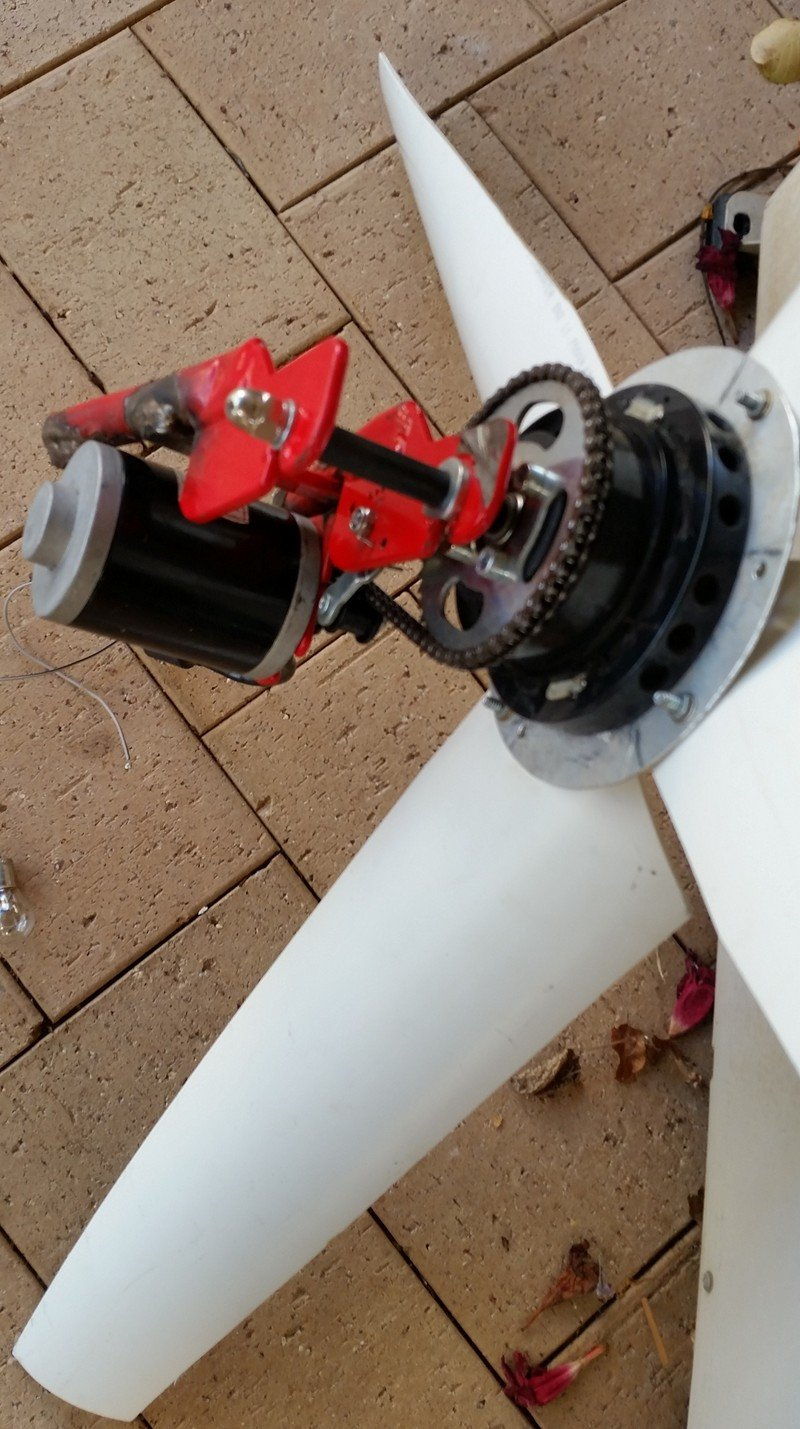
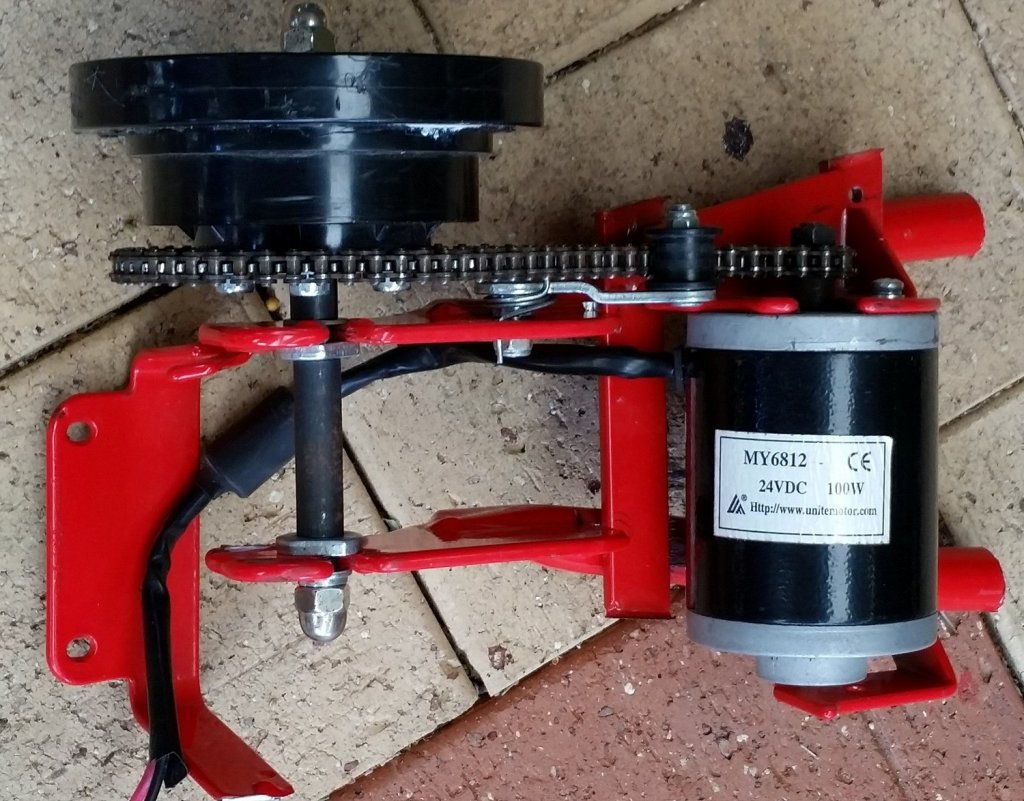
Have to work on a tail next.


Have to work on a tail next.
condor22
Mike
Nightjar, I like the wind genny, great on breezy nights when the sun aint shining 
RR - A smart charger whether DC-DC, solar or mains will typically start at a "soft voltage" and also depending on battery SOC.
They also typically start in BOOST until they figure out that SOC and then move through the 3 stages as required. (I'll leave out the 7 stage functions in this post). They all vary to some degree, I'll leave it to others to check the specs of other brands, but here are mine.
As mentioned I have the Redarc BCDC1220 DC-DC @ 20A, which is a 3 stage charger and the Projecta IC1500 mains @ 15A, which is 7 stage. Assuming the battery is depleted sufficient to need Boost mode here's the comparison;
REDARC/PROJECTA
Boost V - increasing to 14.5V - 20A/ V - increasing to 14.4V - 15A
Absorption V - fixed to 14.5V - A - decreasing to 3.0/ V - fixed to 14.4V - A - decreasing to 2.25
Float V = 13.3 - Min A/ V = 13.7 - Min A
Subtle differences, but in essence they do similar things as will other brands. So the higher V i.e. 14.5 is ok until the battery Floats.
FYI The Projecta is programmable to 2, 4, 8 and 15A output. I have 2 battery capacities 100AH and 130AH, so both chargers will handle the 10-20% charge rate of both batteries.
The biggest fallacy I've noted with those not understanding charging is the charging time. If you have a 100AH battery, use 50AH and charge with a 20 A charger it will not take 50/20 = 2.5 hours to charge. It will be much longer. In boost mode it might take a couple of hours to reach 80-90% SOC at which point it goes in to Absorption mode with a reducing Amp input. This might take another couple of hours and will vary depending on charger, battery condition and size, ambient temp and if under load during charge, to mention a few. A good guide is do the simple math and double it. This applies to MPPT solar controllers as well.
RR - A smart charger whether DC-DC, solar or mains will typically start at a "soft voltage" and also depending on battery SOC.
They also typically start in BOOST until they figure out that SOC and then move through the 3 stages as required. (I'll leave out the 7 stage functions in this post). They all vary to some degree, I'll leave it to others to check the specs of other brands, but here are mine.
As mentioned I have the Redarc BCDC1220 DC-DC @ 20A, which is a 3 stage charger and the Projecta IC1500 mains @ 15A, which is 7 stage. Assuming the battery is depleted sufficient to need Boost mode here's the comparison;
REDARC/PROJECTA
Boost V - increasing to 14.5V - 20A/ V - increasing to 14.4V - 15A
Absorption V - fixed to 14.5V - A - decreasing to 3.0/ V - fixed to 14.4V - A - decreasing to 2.25
Float V = 13.3 - Min A/ V = 13.7 - Min A
Subtle differences, but in essence they do similar things as will other brands. So the higher V i.e. 14.5 is ok until the battery Floats.
FYI The Projecta is programmable to 2, 4, 8 and 15A output. I have 2 battery capacities 100AH and 130AH, so both chargers will handle the 10-20% charge rate of both batteries.
The biggest fallacy I've noted with those not understanding charging is the charging time. If you have a 100AH battery, use 50AH and charge with a 20 A charger it will not take 50/20 = 2.5 hours to charge. It will be much longer. In boost mode it might take a couple of hours to reach 80-90% SOC at which point it goes in to Absorption mode with a reducing Amp input. This might take another couple of hours and will vary depending on charger, battery condition and size, ambient temp and if under load during charge, to mention a few. A good guide is do the simple math and double it. This applies to MPPT solar controllers as well.
- Joined
- Sep 4, 2014
- Messages
- 8,935
- Reaction score
- 6,776
condor22 said:Nightjar, I like the wind genny, great on breezy nights when the sun aint shining
RR - A smart charger whether DC-DC, solar or mains will typically start at a "soft voltage" and also depending on battery SOC.
They also typically start in BOOST until they figure out that SOC and then move through the 3 stages as required. (I'll leave out the 7 stage functions in this post). They all vary to some degree, I'll leave it to others to check the specs of other brands, but here are mine.
As mentioned I have the Redarc BCDC1220 DC-DC @ 20A, which is a 3 stage charger and the Projecta IC1500 mains @ 15A, which is 7 stage. Assuming the battery is depleted sufficient to need Boost mode here's the comparison;
REDARC/PROJECTA
Boost V - increasing to 14.5V - 20A/ V - increasing to 14.4V - 15A
Absorption V - fixed to 14.5V - A - decreasing to 3.0/ V - fixed to 14.4V - A - decreasing to 2.25
Float V = 13.3 - Min A/ V = 13.7 - Min A
Subtle differences, but in essence they do similar things as will other brands. So the higher V i.e. 14.5 is ok until the battery Floats.
FYI The Projecta is programmable to 2, 4, 8 and 15A output. I have 2 battery capacities 100AH and 130AH, so both chargers will handle the 10-20% charge rate of both batteries.
The biggest fallacy I've noted with those not understanding charging is the charging time. If you have a 100AH battery, use 50AH and charge with a 20 A charger it will not take 50/20 = 2.5 hours to charge. It will be much longer. In boost mode it might take a couple of hours to reach 80-90% SOC at which point it goes in to Absorption mode with a reducing Amp input. This might take another couple of hours and will vary depending on charger, battery condition and size, ambient temp and if under load during charge, to mention a few. A good guide is do the simple math and double it. This applies to MPPT solar controllers as well.
Yeah these big deep cycle batteries take a long time to charge, With a 15A or a 26A NOCO by time they have finished doing their equalization mode that can take up to 27 hours, because they fire 1 second pulses of high voltage up to around 15v and until they reach that point they won't go in to standby mode, And if I use the Big Red Wheeled charger on Low = about 9 or 10A max and that will drop down as it charges right down to zero and then that can take up to 12 or 14+ hours to reach it's equalization level,
There is more to charging batteries than just hooking up a charger and going for it, Yes I could charge these 115's at 15/16A and they would reach 95% in about 3 or 4 hours Max But at what cost to the battery Life and storage capacity, So No thanks to that idea,
Until I get a pair of lead crystal batteries I will keep using these batteries in 2 banks of 2 and when I am using 1 set the other can be charging and vice versa,
Since I started doing those fridge tests I have found that you can make your batteries last longer if you Super Cool some canned Drinks and put a layer of them covering the floor of the fridge compartment and then store you food on top of them the fridge will run shorter ON cycles and Longer OFF cycles, This seems to take off about 40 to 70watts off the fridge power usage over a 24 hour period when Hooked up to AC set at 2*c So when this 24hrs is up I will then run the same test using one of the 115 Ah batteries, Baring in mind I am doing this test with the Big ARB 78L Fridge which has the bigger compressor in it. But because the Cans are made of metal they conduct the Cold and keep the fridge sensor at lower temps, Crazy but it seems to be working. :Y:
condor22
Mike
There's nothing wrong charging a 115AH at 15 amps Boost. I've been charging batteries for years at that rate and my last one replaced lasted 10 years. But I rarely exceed 25% of capacity, both by design and process.
Going lead crystal means quicker charging, but less often as you can draw deeper.
The other thing with portable fridges is that because they are limited in size, many tend to stack em full. They work less efficiently when you do that as the cold air does need to circulate. About the only time mine is fuller than normal is on the way back from shopping, but that is a shortish time period. So round containers next to each other might not utilise all the space, but they actually are better for the fridge operation.
Going lead crystal means quicker charging, but less often as you can draw deeper.
The other thing with portable fridges is that because they are limited in size, many tend to stack em full. They work less efficiently when you do that as the cold air does need to circulate. About the only time mine is fuller than normal is on the way back from shopping, but that is a shortish time period. So round containers next to each other might not utilise all the space, but they actually are better for the fridge operation.
- Joined
- Sep 4, 2014
- Messages
- 8,935
- Reaction score
- 6,776
condor22 said:There's nothing wrong charging a 115AH at 15 amps Boost. I've been charging batteries for years at that rate and my last one replaced lasted 10 years. But I rarely exceed 25% of capacity, both by design and process.
Going lead crystal means quicker charging, but less often as you can draw deeper.
The other thing with portable fridges is that because they are limited in size, many tend to stack em full. They work less efficiently when you do that as the cold air does need to circulate. About the only time mine is fuller than normal is on the way back from shopping, but that is a shortish time period. So round containers next to each other might not utilise all the space, but they actually are better for the fridge operation.
Well I too thought that the 15/16Amp setting would of been fine seeing as they are 115's but they don't like it and they start to bubble within 2 and a half to 3 hours, So I switched back to the 10A/9A setting, On the 16A setting they are just about charged in 3 hours 36 minutes and I have to shut it down then because the voltage gets too high, But on the 9/10 setting it takes a good 5 or 6 hours to get to the 14v+ mark, I might try charging them on the 16A when Two are linked together.
condor22
Mike
Might be worth checking your charger or the batteries, probably batteries first. AGMs shouldn't bubble at that charge rate. Both my batteries get 14.4/14.5 V in Absorption mode without an issue. Then hold 13.7 (van) on Float, in fact that's exactly what it currently is as my monitor is bluetooth to my phone.
The other thing I'll mention is that my monitor also has a Temp transducer on the + terminal and the battery will usually be at ambient even when it's only just in double digits. That in itself shows it's not getting hot during any charging stage.
The other thing I'll mention is that my monitor also has a Temp transducer on the + terminal and the battery will usually be at ambient even when it's only just in double digits. That in itself shows it's not getting hot during any charging stage.
- Joined
- Sep 4, 2014
- Messages
- 8,935
- Reaction score
- 6,776
condor22 said:Might be worth checking your charger or the batteries, probably batteries first. AGMs shouldn't bubble at that charge rate. Both my batteries get 14.4/14.5 V in Absorption mode without an issue. Then hold 13.7 (van) on Float, in fact that's exactly what it currently is as my monitor is bluetooth to my phone.
The other thing I'll mention is that my monitor also has a Temp transducer on the + terminal and the battery will usually be at ambient even when it's only just in double digits. That in itself shows it's not getting hot during any charging stage.
My Batteries are Sealed Flooded Lead Acid Deep Cycle batteries, When they come off the charger they normally drop down to about 13.35 to 13.45v and after a few days settle at around 13.32/34v. The charger is fine, I never run it without my Fluke DMM hooked up to the Clamps so I can keep an eye on the voltage.
coming from the battery industry i like seeing other ideas
- Joined
- Sep 4, 2014
- Messages
- 8,935
- Reaction score
- 6,776
I just added one of these Portable folding Solar Panels to my Kit just to play around with while I am testing my fridges, I Always wanted to get one just incase and I can leave it in the truck full time when I've finished playing, The price was right, The Solar shop I have been dealing with wanted about 400 bucks of one,
Anyways here it is,,
https://www.amazon.co.uk/DOKIO-Mono...coding=UTF8&psc=1&refRID=WY0EXWNM670MJNTH2XWP
Anyways here it is,,
https://www.amazon.co.uk/DOKIO-Mono...coding=UTF8&psc=1&refRID=WY0EXWNM670MJNTH2XWP
Similar threads
- Replies
- 10
- Views
- 5K


